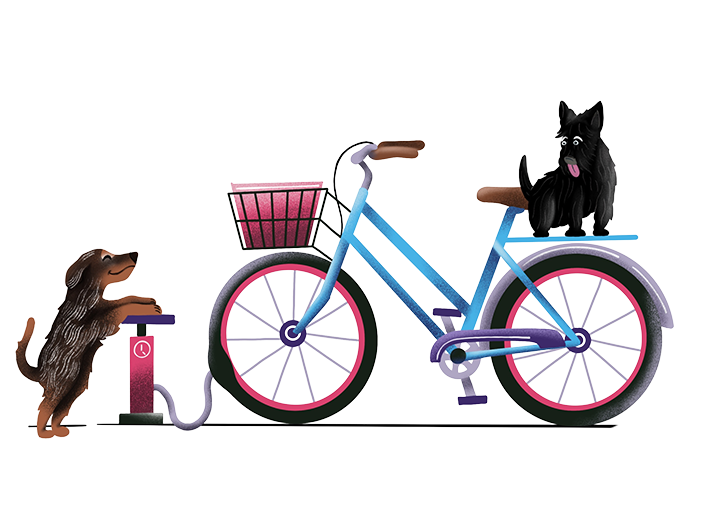Menu

In the 1960s up until the mid-2000s, TV was one of the most influential marketing tools around. Ads and commercials were effective even though they interrupted TV shows because people remained hooked to the stories being told through their screens.
These days, it’s become incredibly challenging to capture market attention. Americans are exposed to around 4000 - 10,000 ads per day and the audience in the digital world doesn’t have as much patience with them as before. People can easily swipe, scroll, or tap away from ads that don’t interest them.
Brands have found the solution around this problem by creating content their audience will resonate with. By putting organic brand building in mind, they’re cultivating relationships with customers and engaging them in the process. When done right, videos, podcasts, and articles can re-introduce products and services in a way customers can see them in their lives.
And while this strategy works for many brands, others still fail to engage their audience. The problem? They’re missing an important ingredient: storytelling. Storytelling is what draws people in and helps them remember you.
But you won’t be successful with this strategy if you’re still stuck on a brand-centric approach. Let us explain why.
Think of a traditional magazine. The first thing you see is the cover with a celebrity or model on it. Already on the first page they highlight things you might actually like: celebrity gossip, recipes, and a few other things that may pique your interest.
Flip through a few pages and you’re bound to see the cover story, followed by the most interesting articles. You’ll see the content grow less and less interesting to you by the time you reach the last few pages.
This is the strategy magazine publications employed, and is something you still see on feature sites like Buzzfeed: the good stuff is always on the homepage. Only now sites are much smarter than magazines: they use cookies to understand what you like and what content is best shown to you first.
Publications go straight to what the audience wants to read the most. They don’t waste their readers’ time. They lead with scoops, stories, and photos they know their audience will love.
The publication cares about the audience and writes for the audience. The audience supports the publication in return.
But brands don’t really work that way.
In fact, brands work in almost exactly the opposite way. And that’s why they fail at conversion.
A brand doesn’t begin with the audience in mind; it tends to begin with itself. Brands use conversion strategies like social media contests, PPC campaigns, and referral programs to help them, which works well when there is a clear problem to be solved. But when the audience doesn’t even know what the problem is, let alone think of the brand as a solution, then conversion strategies are useless.
For brands, the challenge is to convince their target audience that they need to buy their product or engage with their services. And this is where the awareness strategy falls in.
Are brands good at making people aware of what they need? Being good at creating content and creating content your audience will love are two different things. You can be good at SEO, have awesome ads, and share the most amazing webinars. But if you don’t know how to tell a story beyond yourself, chances are your audience won’t stick around to listen.
Publications are successful because they sell stories about a kind of lifestyle they want their audience to aspire towards. As a result, readers are hooked to the idea of these amazing lives, even if it’s someone else’s.
Brands, on the other hand, tend to create content in hopes people will aspire to own their products. In reality, people don’t aspire to have products; they aspire to have the feelings that products give them.
To understand the awareness concept better, let’s take a look at PepsiCo’s Mountain Dew.
In 1996, Pepsi re-positioned Mountain Dew from a regional country brand and made Mountain Dew synonymous with action sports and youth culture. Check out this video to see how Pepsi began encouraging more people to “do the Dew”.
Instead of selling Mountain Dew as it is, Pepsi sold stories around the youthful, exciting skating culture that dominated the 90s. Mountain Dew sponsored athletic events, developed grassroots programs, and even created a documentary around skating to appeal to teenagers (and their parents).
Of course, people cared more about the cool skateboarding and snowboarding subcultures. It didn’t matter that it was another soda brand; it was their soda. Pepsi managed to get more attention for Mountain Dew by focusing on their target audience instead, and skaters loved them for it.
Now if you’re a brand marketer, you might doubt how this strategy plays out. Maybe people are interested in the idea you’re promoting, but not all of them are qualified buyers. What if they never buy our soda?
Yes, those are important considerations. Selling ideas through content takes a long time and tying up content to your sales is difficult. But you’re not creating content to make quick sales. You’re implementing this awareness strategy to capture attention and sell an idea adjacent to your product.
Once you capture the market’s attention, you can nudge your audience what they should pay attention to. You would have the power to redefine your market. The key to unlocking to this power? Stop talking about your brand and start talking about what your audience will actually care about.
One surefire way you can connect with your audience is to tell them a story. Storytelling is an inherent part of human nature. Through the storytelling experience, you can engage the public’s attention and form an emotional bond with them.
When people are invested in a story, they don’t click away. They consume the story and remember it easily, because the context helps the main message stick.
Going back to our Mountain Dew example, they released a documentary that follows a group of skateboarders as they help design their ideal skate park. Although the campaign itself wasn’t a massive success, skateboarding fans watched the 23-minute video and left their reactions on the comment section. Mountain Dew consistently told stories by and for their target audience.
Aside from getting your audience onboard with the story you’re telling them, what other things can storytelling do for your brand? Some great ways stories can work for your brand include:
As we said above, great brand-building demands great storytelling. But the thing about great storytelling is that it can’t be bought; it’s a skill you have to learn, develop, and master. Before you begin crafting an awareness story for your brand, here are three parts of storytelling you cannot leave out:
When you’ve got the storytelling part of your brand-building locked down, you can make the most compelling brand story possible. So what should you think about when planning out your brand story?
In the digital landscape, the consumers are in control. There are so many content sources that are fighting for their attention so they don’t really need to listen to your brand. They can easily scroll past your articles or even install ad blockers on you. Avoid this problem by striking a balance between what your audience is looking for and what you want your brand to convey about itself.
When you tell a story through content, you have to serve your audience value. Even if an audience-focused approach is a long play, the payoff will always come. When you put value first, brand recognition will follow.
No one will pay attention to a boring story so you have to turn up the entertainment factor. When people are amused, they will continue to read or watch your content. You can also tap into experiences and emotions many people would be familiar with. This will build a stronger connection with your audience, help make your story memorable, and keep your narrative authentic.
Have you ever listened to a friend telling a story, only to hear them change details again and again before the story is over? It’s a frustrating experience. Consistency and honest storytelling will win your skeptical consumers over. You can create more authentic content by supporting your story with proper research. Include data and visuals for a full storytelling experience.
It’s time to stop yelling about your brand and start beginning a conversation with your audience. By putting your audience first, you can avoid wasting time and resources on strategies that just don’t click. Once you get the hang of telling stories they pay attention to, brand awareness will naturally follow.
